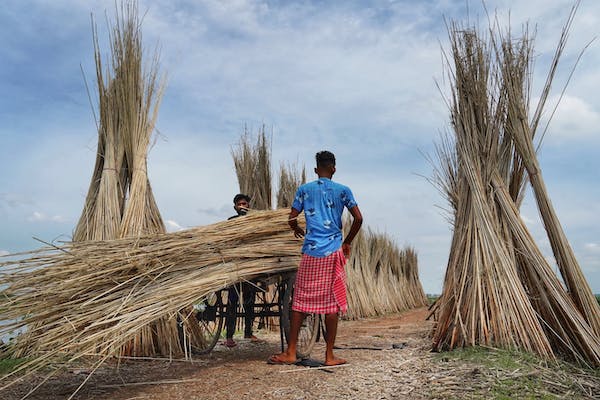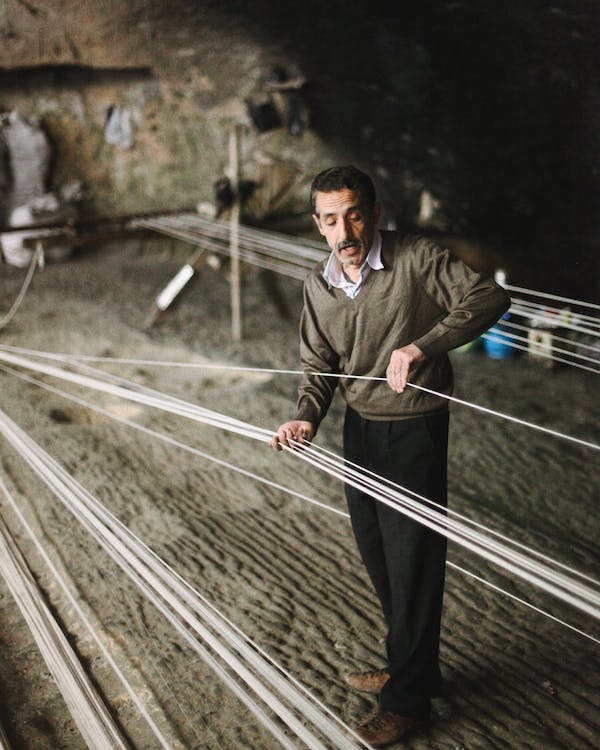
Understanding the Imperative for Rural Livelihood

Hello readers! Today we’re going to take a deep dive into a topic that perhaps doesn’t often hit the radars of bustling urbanites – Rural Livelihood Diversification. My goal is – by the time you’ve finished reading this article, you’ll have amassed quite the encyclopedic knowledge on the topic. So, buckle up and get ready for our journey!
Expounding the Concept of Rural Livelihood Diversification (RLD)
You may be asking, what on earth is Rural Livelihood Diversification? Is it some sort of farming strategy? Well, kind of, but it’s so much more than that. In the rural areas there are possibilities of diversification given the possibility of land availability. Even if it happens that one does not posses land they borrow from their neighbors at an affordable cost.
Definition of RLD
In the simplest of terms, RLD is the process by which rural households move away from dependence on traditional agricultural activities, towards a more diversified range of income-generating pursuits. It’s like not putting all your eggs in one basket.
Explanation of how RLD works
“But how does this work?”, you might ask. Well, imagine you’re a farmer who primarily grows potatoes. What happens if there’s a blight or an influx of perky potato-eating pests in your area? Rather than putting yourself and your family at risk, you introduce other income streams. Maybe you start raising goats, or start a roadside stall selling homemade jams or even offer guided nature walks on your property. That’s RLD in a nutshell.
The Importance of Studying Rural Livelihood Diversification
Now, before we venture further down the RLD rabbit hole, you might be wondering why we’re focusing on the 2000s. Full steam ahead as we delve into the reasons behind it! Studying about rural livelihood diversification empowers individuals with knowledge on how to assist the people living in the rural areas so that they are able to live a standard life.
Reason to focus on the 2000s
The 21st century, particularly the 2000s, ushered numerous socio-economic changes that altered rural livelihoods in countless ways. Studying this period allows us to understand better how modern factors such as technology adoption, climate change, and newer market dynamics influenced RLD. Impact of RLD on socio-economic growth, remember the potato-afflicted farmer we talked about earlier? The diversification of his income didn’t just protect his household; it stimulated local economies by generating employment and fostering small-scale entrepreneurship. Scarce are the strategies offering such a win-win situation!
The Structure of the Article
Don’t worry! This article isn’t just a hodgepodge of facts and figures. We’ve got structure, we’ve got plans, and we’re ready to lay it all out. Explanation of how the topics will be covered, we’ll journey together through a historical perspective, delve into the 2000s, and peek into what the future might hold. Along the way, we’ll examine the influences and impacts of RLD, and discuss real-life case studies.
The relevance of the subsequent sections in the overall discussion
Each section will add a new layer to our understanding of RLD. By weaving these threads together, we’ll create a rich tapestry depicting the complexity and dynamism of RLD. The Evolution of RLD, the concept of RLD isn’t a fresh-off-the-press concept. Farmers have been practicing it for centuries. However, it was during the 2000s when diversification became less of a survival strategy and more of a choice, thanks to globalization, technology, and improved market access.
Specific reference to transformations in the 2000s
Our plucky potato farmer might start selling his spuds online, or create quirky potato recipes and share them on a blog. These technological advancements in the 2000s allowed rural households to broaden their economic horizons and reap the benefits that urban areas enjoyed.
Factors that Influenced RLD
Let’s delve deeper into what was stirring the 2000s RLD pot. Economic factors such as changes in market dynamics, the 2000s saw a shift towards globalization and free trade, creating wider markets for rural products. Can anyone say “artisanal potato chips”? Social factors such as migration and population growth. As young people migrated to urban areas, the aging rural population faced new challenges but also new opportunities in RLD. Enter agri-tourism, organic farming, and a plethora of grandparent-led home industries!
The 2000s: Marking a Milestone in RLD
Unarguably, the 2000s was a game-changing period for RLD. Installing that turning point signpost, here’s why the 2000s have been exceptional!
Critical developments in RLD in the 2000s
This period saw the internet and mobile technology expand to rural communities, opening up a treasure trove of resources, connections, and marketplaces that were just a click away. Explanation of why the 2000s can be regarded as a turning point for RLD. Hands down, the internet changed the game. Our beloved potato farmer could learn new farming techniques, network with other farmers, sell his produce online, and even start a potato-themed podcast! The 2000s were, without a doubt, a pivoting period for RLD.
Socio-Economic Effects of RLD
With diversified income streams, rural households became more resilient to economic shocks, and the income upliftment acted as a poverty alleviation tool. On a wider scale, this boosted local economies, reduced rural-urban disparities, and led to social upliftment. Talk about a win-win-win!
The Environment and RLD
Now, like it or not, every coin has two sides, my friend. It’s vital to consider how RLD during the 2000s affected Mother Earth. RLD could lead to better land use and reduced pressure on natural resources. However, it could also lead to over-exploitation if not well managed. This is why understanding the balance between RLD and environmental conservation is so essential. As we all know, without a healthy planet, there’s no livelihood to diversify.
Case Studies
No academic discussion is complete without some real-world examples. Let’s hitch a ride and breeze through some 2000s RLD case studies.
Real-life examples of RLD in the 2000s
Imagine a village in India, once solely dependent on seasonal agriculture, turning to sericulture (read: silk farming), handicrafts, and ecotourism in the 2000s. Or envision a rural community in Kenya starting a cooperative to sell fair-trade coffee and hand-made crafts online to international markets.
Analysis of successful and unsuccessful RLD efforts
While these stories of transformation warm our hearts, it’s important to remember that RLD isn’t a magic bullet. Sometimes, due to poor planning, lack of skills, or unfavorable external conditions, diversification efforts fail. The lesson here is that it’s imperative to analyze both successful and unsuccessful attempts for a balanced understanding of RLD.
The Necessity for RLD in Rural Communities
“Why does it matter?”, you might ask. Well, my friend, for rural communities, RLD is not just a strategy; it’s a lifeline. Reducing Dependency, RLD is essentially an exercise in risk management. If one income source fails, others are there to cushion the fall. Plus, a little extra in the bank never hurt anyone, right?
Enhancing Resilience
No one likes unexpected surprises, like a climate change-induced drought or a burst in the potato market. Diversification provides a safety net for when these shocks occur, helping communities bounce back quicker.
Promoting Sustainable Development
RLD is also very much aligned with sustainable development goals. This is where we don our green hats and delve into it a bit further. How RLD aligns with sustainable development goals, RLD can alleviate poverty (Goal 1), contribute to zero hunger (Goal 2) and can foster innovation and infrastructure (Goal 9). If done correctly, it can also promote responsible consumption and production (Goal 12), ensuring that our beloved planet doesn’t bear the brunt of our economic endeavors.
The role of RLD in promoting rural development
Aside from the individual benefits for rural households, RLD can rejuvenate the entire community, fostering a more diverse and vibrant local economy. Don’t we all want the hidden corners of the world to flourish?
Emerging Trends in RLD
Several exciting trends are on the horizon in the world of RLD, from solar farming to online marketplace platforms specifically designed for rural entrepreneurs. These trends demonstrate the continually evolving nature of RLD. Projections for the future of RLD, Looking ahead, we can expect an increasing focus on sustainable and eco-friendly practices in RLD. After all, the green revolution isn’t just for city folk!
Challenges and Opportunities in RLD
Just like in any other venture, RLD presents both challenges and opportunities. Let’s magnify them a bit shall we? Addressing potential risks and barriers to RLD, RLD isn’t all sunshine and rainbows. Challenges like access to finance, technology or market linkages, regulatory issues, and climate change can all pose significant hurdles.
Identifying opportunities for expanding RLD
On the bright side, with problem comes solutions. Innovations in technology, responsive policy, and investments can all serve to stimulate RLD. The key is to turn stumbling blocks into stepping stones. There should be calls for developing the rural areas; This is supposed to be a call of all individuals. The rural areas in most cases feed the urban areas in terms of agriculture and so should be supported.
Strategies for promoting RLD
Public policy and private investment can both play a pivotal role in promoting RLD. Also I believe, the hearts and minds of rural communities themselves are the best catalysts of change. Role of policy and regulation in advancing RLD. Smart policies that support RLD, and fair regulations that don’t unduly handicap rural communities, are vital. Policymakers, ranked in your awareness armor, your knightly duty calls!
Conclusion
That was quite the journey, wasn’t it? While we are wrapping things up, let’s revisit our key takeaways. In the rural there are lives. We have people living in the rural areas who have needs as people in other areas specifically urban areas. Rural development is important as there are people living in those areas too.
Recap of Key Points
RLDs are a crucial lifeline for many rural communities. It’s not just about survival, but about thriving – creating a richer, more diversified rural economy. The 2000s marked a pivotal point in RLD’s evolution, with the internet significantly broadening horizons. Final Thoughts, While challenges remain, the future of RLD looks promising and exciting. Here’s to successful diversifying and thriving rural communities, not just in the 2000s, but for many more decades to come.
Frequently Asked Questions
What is Rural Livelihood Diversification?
Rural Livelihood Diversification is a process of balancing and expanding multiple income streams in rural households moving them away from reliance on traditional farming.
Why is RLD considered important?
RLD is important because it helps in poverty alleviation, enhances resilience against crises, promotes sustainable development, and boosts rural economies.
What are the main drivers of RLD in the 2000s?
Major drivers of RLD in the 2000s include technology adoption, changes in market dynamics, migration, and population growth.
What are the benefits of RLD?
Benefits include socio-economic upliftment, reduced dependency on single income streams, promotion of sustainability, and more resilient rural communities.
What are the challenges facing RLD, and how can they be overcome? Challenges include access to financial resources, technology and market dynamics, and climate change. However, opportunities lie in technological advancement, supportive policies, and investment in rural areas.
Whew! Quite a bit to take in, wasn’t it? But as always, knowledge is power. So, now we’re all a bit more powerful – or at the very least, a little more enlightening to chat with at dinner parties. Until next time, stay curious, my friends!









Leave a Reply